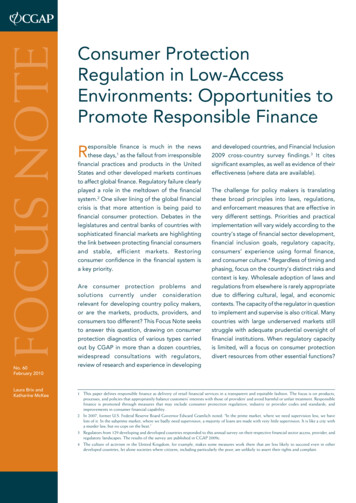
Transcription
FOCUS NOTENo. 60February 2010Laura Brix andKatharine McKeeConsumer ProtectionRegulation in Low-AccessEnvironments: Opportunities toPromote Responsible Financeesponsible finance is much in the newsthese days,1 as the fallout from irresponsiblefinancial practices and products in the UnitedStates and other developed markets continuesto affect global finance. Regulatory failure clearlyplayed a role in the meltdown of the financialsystem.2 One silver lining of the global financialRcrisis is that more attention is being paid tofinancial consumer protection. Debates in thelegislatures and central banks of countries withsophisticated financial markets are highlightingthe link between protecting financial consumersand stable, efficient markets. Restoringconsumer confidence in the financial system isa key priority.Are consumer protection problems andsolutions currently under considerationrelevant for developing country policy makers,or are the markets, products, providers, andconsumers too different? This Focus Note seeksto answer this question, drawing on consumerprotection diagnostics of various types carriedout by CGAP in more than a dozen countries,widespread consultations with regulators,review of research and experience in developingand developed countries, and Financial Inclusion2009 cross-country survey findings.3 It citessignificant examples, as well as evidence of theireffectiveness (where data are available).The challenge for policy makers is translatingthese broad principles into laws, regulations,and enforcement measures that are effective invery different settings. Priorities and practicalimplementation will vary widely according to thecountry’s stage of financial sector development,financial inclusion goals, regulatory capacity,consumers’ experience using formal finance,and consumer culture.4 Regardless of timing andphasing, focus on the country’s distinct risks andcontext is key. Wholesale adoption of laws andregulations from elsewhere is rarely appropriatedue to differing cultural, legal, and economiccontexts. The capacity of the regulator in questionto implement and supervise is also critical. Manycountries with large underserved markets stillstruggle with adequate prudential oversight offinancial institutions. When regulatory capacityis limited, will a focus on consumer protectiondivert resources from other essential functions?1 This paper defines responsible finance as delivery of retail financial services in a transparent and equitable fashion. The focus is on products,processes, and policies that appropriately balance customers’ interests with those of providers’ and avoid harmful or unfair treatment. Responsiblefinance is promoted through measures that may include consumer protection regulation, industry or provider codes and standards, andimprovements in consumer financial capability.2 In 2007, former U.S. Federal Reserve Board Governor Edward Gramlich noted: “In the prime market, where we need supervision less, we havelots of it. In the subprime market, where we badly need supervision, a majority of loans are made with very little supervision. It is like a city witha murder law, but no cops on the beat.”3 Regulators from 129 developing and developed countries responded to this annual survey on their respective financial sector access, provider, andregulatory landscapes. The results of the survey are published in CGAP 2009c.4 The culture of activism in the United Kingdom, for example, makes some measures work there that are less likely to succeed even in otherdeveloped countries, let alone societies where citizens, including particularly the poor, are unlikely to assert their rights and complain.
2Box 1. Basic PrinciplesThree basic principles should guide financialservice providers’ conduct, whether they serveinexperienced home buyers in the United Statesor microfinance clients in developing countries.Financial service providers should be required to(i) disclose key information clearly, at appropriatepoints before, during, and after a transaction iscompleted; (ii) treat consumers fairly and ethically;and (iii) offer recourse mechanisms for effectiveresolution of errors, complaints, and disputes.This Focus Note describes current practices andassesses options for design and implementationof basic consumer protection rules, focusingon low-access environments. It includes thefollowing: A package of basic consumer protectionrules that address problems faced by poorerconsumers with little experience usingformal finance and that are appropriate inlow-access environments—i.e., those withlow levels of access to formal financialservices, especially among low-incomepeople, and limited regulatory capacity5 A package of “next generation” measuresthat could be implemented later, as marketsdevelop, competition increases, productsbecome more numerous and diverse,and regulatory capacity and experiencedeepens Analysis of regulatory options to promotethe three core consumer protectionprinciples—transparency, fair treatment,and effective recourse—in low-accessenvironments Observations on implementation,monitoring, and enforcement of the basicand next generation packages Discussion of how the two other pillars ofresponsible finance—industry standardsand improvement of consumer financialcapability—can complement and reinforceregulationAnnex A provides a sample tool to helpregulators identify, prioritize, and addressconsumer protection concerns in their market.Annex B provides information and analysis onthe pros and cons of different regulatory set-upsfor financial consumer protection.Financial Consumer Protection inLow-Access EnvironmentsWhy should policy makers intervene infinancial markets to protect consumers?Perhaps the most important reason for regulationis to offset the inherent information imbalancebetween financial service providers andconsumers. When providers put out misleadingadvertisements or provide partial and confusingproduct disclosures, for example, customers aremore likely to make inappropriate choices oreven take up products that could harm them(such as unmanageable debt). Providers havean even greater opportunity to exploit theirsuperior information and negotiating powerwhen competition levels are low in localmarkets.Financial consumer protection regulationalso seeks to address specific biases andweaknesses on the demand side. Consumershave a responsibility to inform themselves,avoid being taken advantage of, and choosewisely. This can be difficult for lower income5 The paper hereafter refers to low-access environments, while acknowledging that the evolution of financial inclusion and regulatory capacity donot always perfectly align.
3clients who have less experience with formalfinance and fewer options. They may havelimited awareness, knowledge, and skills toassess products’ appropriateness, costs, andrisks. Other factors—such as being female,coming from a caste that faces discrimination,or not speaking the dominant language—maycompound consumer protection challenges.Systematic biases in how people perceive theiroptions and make financial decisions can furthercomplicate matters.6Not only may low-income consumers be morevulnerable to misconduct by providers and lessable to protect themselves, the consequencesof their financial missteps may be more severe,resulting in lost income, assets, and consumption.These factors combined suggest the need forpolicy makers and regulators to ensure thatconsumer protection measures adequately meetthe needs of poor or inexperienced customers.Consumer protection regulation can contributeto financial inclusion in several ways. Itaddresses information asymmetries and otherfactors that limit consumers’ ability to identifythe most suitable products and avoid harmfulproducts and practices. Increased transparencyand fair treatment can help new consumersgain confidence in formal financial services. Italso can promote the efficiency and fairnessof markets, by facilitating healthy competition,resulting in improved products and practices.There is growing agreement as well, at least inmore developed markets, that effective financialBox 2. Responsible Finance in LowAccess EnvironmentsResponsible finance is the delivery of retail financialservices in a transparent and equitable fashion.Strategies to advance responsible finance includeconsumer protection regulation; provider andindustry standards, such as codes of conduct; andinitiatives to improve consumer awareness andfinancial capability. This Focus Note concentrateson consumer protection regulatory measures thatare appropriate for low-access environments, thatis, places with low levels of access to formal financialservices (especially among low-income people) andlimited regulatory capacity.consumer protection regulation can contributeto overall financial stability.What can go wrong for consumers inlow-access environments?While problems vary widely, common marketconduct issues include pricing transparency,appropriate sales and collections practices, andespecially as competition increases, safeguardsto prevent over-indebtedness. Some issues andproblems arise only for certain products. Others,such as aggressive sales practices, data privacy,and recourse, apply regardless of product type.(See Box 3.)What types of regulation protectfinancial consumers?Several types of law and regulation serve toprotect consumers and help them receive fairtreatment in the market. The foundation is6 Recent behavioral research shows that consumers consistently underestimate certain risks (e.g., optimistic assumptions about future earnings)and overestimate others (e.g., over-insurance against certain future events). They place more weight on current returns over future ones. Studiesalso reveal consumers’ tendency to overestimate financial acumen and over-trust advice from authority figures (e.g., a loan officer or broker).The temptation to accept an offer that is too good to be true may be universal, judging from periodic pyramid investment schemes. While theresearch base to date is primarily developed countries, intriguing new findings are emerging on poor consumers in developing countries. See, forexample, Collins et al. (2009), Banerjee and Duflo (2006), Tiwari et al. (2008), and Microfinance Opportunities (2008). Further such researchwould contribute greatly to consumer protection efforts of regulators and policy makers.
4Box 3. What Can Go Wrong?Typical cross-cutting consumer protectionconcerns Product transparency. Consumers don’t understandthe service’s total cost; this can be exacerbated bydeceptive advertisements, excessive small print,complicated terms, inadequately trained staff, etc. Overcharging. Consumers are charged extrafees and commissions that are not authorized orproper. Sales practices. Consumers face aggressive salestechniques as part of door-to-door solicitations orlimited-time offers. Inadequate documentation. Consumers do notreceive copies of contracts, receipts, etc. Privacy, security, permission to share with thirdparties. Consumers cannot be sure that personaldata will be treated appropriately. Recourse. Consumers don’t know that they havethe right to complain or get errors resolved; theymay know they have this right, but don’t knowhow and where to complain; they know how andwhere to complain, but fail to receive appropriateredress.nonprudential consumer protection regulationgoverning the market conduct7 of providerstoward users of financial services. Ideally, thisshould set rules for practices and productfeatures across provider types, covering allproviders of similar products and services.Consumer protection regulation focuses mainlyon products, whereas prudential regulationseeks to maintain the financial health andsolvency of institutions and the broader financialsystem. Prudential regulation contributes toconsumer protection as well, however, by tryingto prevent losses by small, unsophisticateddepositors and promote sound providers thatcan offer reliable access to financial servicesProduct-specific concerns Deposit products. Consumers’ savings are erodedby hidden fees or deposits are lost to fraud. Credit products. Consumers don’t understandthe terms and conditions of their loan agreement,e.g., what happens in the case of delinquency ordefault; they pay a high price; they take on toomuch debt; they are exposed to loan officers thatask for a “gift” to complete the loan process, torecommend a larger loan, or to expedite loanapproval; they are subject to intimidation, abuse,or humiliation by collections staff/agents. Payments services. Consumers transfer money tothe wrong person or mobile phone and don’t knowhow to correct the error; they lose their personalidentification number or have it interceptedelectronically by a fraudster. Insurance. Consumers don’t understand, or they failto receive, policy benefits (e.g., they don’t receivethe full benefit when a family member dies); theydon’t realize that the loan price includes credit lifeinsurance, and so are paying more than expectedand failing to benefit from the insurance.over time.8, 9 Some consumer protection rulesserve both prudential and nonprudentialobjectives (e.g., reckless lending rules aimedat keeping both lenders and borrowers fromgetting into trouble). Enforcement of other lawsand regulations (e.g., those governing fraud,financial crimes, and bank secrecy) through civiland criminal penalties may also have consumerprotection dimensions, as when Ponzi schemesare detected and disrupted. Competitionoriented regulation can rein in practices such asunreasonable barriers to switching providers,which can have negative consequences for bothconsumers and competitors in the market. Asa result, in many countries responsibility for7 Market conduct (or conduct of business) refers here to the interaction between provider and consumer. While regulation also can govern otherdimensions of conduct, such as providers’ interaction with other providers or investors, this paper focuses on consumer-oriented market conduct.8 This distinction refers to the nature of consumer protection regulation rather than the locus of enforcement. Most such consumer protectionregulation is currently overseen and enforced by prudential regulators.9 Other measures such as deposit insurance also serve to protect consumers.
5financial consumer protection is shared amongmultiple financial and nonfinancial regulatorsand enforcement bodies.makers identify priority market segments, theyneed to consider how best to tailor consumerprotection measures to the segments’ specificcircumstances so that they are effective.Which consumers?Typically, consumer protection regulation seeksto protect all retail consumers.10 Special attentionmay be given to segments that are morevulnerable to abuse or unfair treatment. In manydeveloping countries, where financial inclusionis an ever more prominent policy goal, onepriority area might be consumers who are lessexperienced (e.g., those who are just beginningto use formal finance), which often correlateswith lower incomes and education levels. This isthe primary market segment considered in thisFocus Note. A central problem these consumersface is too few options for good quality, formalfinancial services to help them manage theircomplicated financial lives.11Another segment policy makers might prioritizecomprises lower level salaried workers—theaspiring middle-class segment that is growingvery rapidly in some countries. In contrast tothe poor, this group is vulnerable preciselybecause it has too many options. In countrieslike Russia, Brazil, South Africa, and India, withskyrocketing consumer credit, salaried workersare bombarded with credit offers and subjectedto high-pressure sales tactics that take advantageof their limited experience with formal finance.This market segment tends to be ill-prepared tosort through the options, make good choices,and avoid getting overextended. As policyWhat is the relationship betweenfinancial inclusion and protecting lowincome consumers?Although industry leaders, journalists, andacademics debate the available evidenceheatedly, most now accept that access toformal financial services of a variety of typescan improve the well-being of poor people. Infact, access to well-designed financial servicescan yield substantial protective benefits to poorhouseholds. Being able to tap savings or creditfrom a reliable financial institution, for example,can help the poor manage crises, such as illness,without having to sell assets.12Thus, in low-access environments, regulatorsshould take special care that the cost ofcomplying with new consumer protection rulesdoes not make serving low-income customersunattractive for responsible providers, with theunintended consequence of “protecting thepoor out of the market.” At the same time,the goal of financial inclusion need not implythat unbanked customers should receive lowerstandards of safety and quality.Regulation engenders direct and opportunitycosts for regulators, providers, and consumers.The direct costs of monitoring, compliance,and enforcement may be easier to quantify10 Some countries define the scope of retail consumers to include very-small-scale businesses whereas others limit the definition to natural persons.11 For example, Collins et al (2009) collected financial diaries from hundreds of poor families in Bangladesh, India, and South Africa and foundhouseholds used an average of 8 to 10 different financial instruments over the year, including savings mechanisms, loans, remittances, andinsurance. This work highlights a key consideration for regulation: the poor manage to derive benefit from financial instruments that may appearto be of unacceptably low quality to outsiders, such as regulators. Reducing their options should be done with considerable care.12 See, for example, Collins et al. (2009).
6than the benefits of responsible financial sectordevelopment. This can make it tempting toavoid introducing new regulation in low-accessenvironments, where regulatory capacity orthe transaction costs of serving low-incomepeople are major issues. Many valid questionsarise: Will new consumer protection rules beenforced adequately to deliver their intendedbenefits? Will compliance costs be passed onto consumers, hindering access for the poor?Will providers find the cost of complyingwith basic conduct rules—covering plainlanguage price disclosures, fair advertising andcollections, or recourse—so onerous that theyare discouraged from serving the unbanked?There is little evidence to suggest that basicconsumer protections will pose a major barrierfor responsible providers offering appropriateproducts and services.Let’s take the hot-button issue of the price ofcredit for the poor. Policy makers concernedabout high-cost providers and deceptiveadvertising, for example, can (i) imposestandard disclosure requirements on all creditproviders in the market, (ii) make consumersaware of their right to this information, and(iii) find cost-effective enforcement steps.Responsible players are likely to find the onetime, up-front compliance costs (redesigningforms and signage, training staff on the newrules, etc.) and ongoing expenses feasible. Forthose players with a business model that relieson opaque pricing and fees for its profitability,however, the new regime could make service tothis market untenable.Is this a loss from a financial inclusionperspective? Typically it is not—if the goal isresponsible finance, where market practicesand products balance the interests of providersand their clients. Consumer protection rulesin low-access environments should safeguardthe interests of consumers, promoting qualityservices and fair competition. The exit of lowerquality players that are deceptive and abusive orthat seek to maximize profits in the short termat the expense of long-term value for customersand shareholders is in fact usually a major goalof such regulation.Where to Begin? A Targeted,Incremental ApproachIn a small but growing number of developing andemerging market countries, policy makers havedeveloped innovative and effective consumerprotection regulation. They have taken anincremental, proportional approach, phasing innew rules that responded to specific consumerrisks, the country’s financial inclusion priorities,and regulatory capacity. By incremental andproportional, we mean regulatory responses thatare crafted in light of (i) the nature and extentof the most critical problems; (ii) the benefits orthe consequences of not acting—for consumers,providers, and the market as a whole; (iii) thecosts to providers of new rules, and how the rulesmight affect overall affordability and availabilityto the covered providers and products; and(iv) the supervisory capacity and political willto implement and enforce regulations.13 Policymakers in low-access environments should not13 “Proportionate” or “proportional” is used differently in different contexts, e.g., for the U.K. FSA: “The restrictions we impose on the industry mustbe proportionate to the benefits that are expected to result from those restrictions: In making judgments in this area, we take into account thecosts to firms and consumers. One of the main techniques we use is cost benefit analysis of proposed regulatory requirements.” index.shtml.
7Box 4. Getting Started: Some Key Questions Which customer segments are particularlyinexperienced or vulnerable to abuse? Which significant consumer protection problemsare present in our credit markets? Are there problems emerging around noncreditproducts, such as remittance and payment services,deposit services, and insurance? What regulation, if any, is in place? Whichtypes of consumer protection rules—disclosurerequirements, fair treatment standards, restrictionson potentially harmful products and practices,feel that they need to come up with an all ornothing approach or to do too much too fast.If regulatory capacity to monitor and enforce islimited, an overly ambitious new regime couldcreate expectations that are hard to meet.An example from Cambodia emphasizeshow taking fairly simple first steps can lay thegroundwork for fair, competitive, and efficientdelivery of financial services; extend basic rightsto consumers; and reduce instances of deceptive,unfair, or confusing financial products andpractices. Cambodian microfinance providersserve far more customers than commercialbanks. Little consumer protection regulation wasin force, so the central bank began by identifyingwhat it believed to be the greatest problemfacing microloan customers—transparentpricing—and implemented simple rules on pricecalculation and disclosure. The formula requireduse of the declining balance rather than flatformula (common in many microfinance markets)for interest calculation. The regulation wasmechanisms for recourse, etc.—are best suited tothe problems observed? What nonregulatory alternatives—such as industrystandards or consumer awareness and financialcapability measures—might complement orsubstitute for new regulation? Do certain types of providers or products accountfor a disproportionate share of problems? Which entity or entities should oversee marketconduct regulation? How can adequate capacityfor this expanded role be ensured?widely credited with bringing down the cost ofcredit at the time for consumers and increasingcompetition (CGAP 2009a and Clark 2006). Thisinitial step laid a good foundation from whichCambodia can now build with further consumerprotection rules as needed.14The reality is that overstretched policy makersoften wait until a pronounced market failure hasoccurred to devise a regulatory response. Yetfailure to anticipate risks to a financial sectormay bring its own inefficiencies and potentialdamage down the road, to the system as wellas to individual consumers. In markets withrapidly expanding access to consumer credit,for example, preventive actions may be the leastcost approach in the long run by preventingwidespread delinquency and default. Andsetting clear rules at the beginning can allowresponsible providers to achieve efficiencies byputting in place any one-time changes to theirsystems, forms, and staff training occasioned bythe new regulation.14 South Africa offers another example of incremental, proportional regulation of credit markets. In 1999, policy makers put in place an Exemption tothe Usury Act aimed at reining in problematic practices by credit providers while promoting healthy growth of credit to underserved segments. In2005 the more comprehensive National Credit Act was enacted, creating a National Credit Regulator and adding provisions to address additionalrisks and problems arising in the fast-growing market. 1
8Box 5 lays out two broad packages ofregulation, to provide general guidance fortailoring consumer protection rules to countrycontext and allocating regulatory resources.It is important to emphasize, however, thatstylized delineation of this type will not work forall contexts or products. Consumer protectionissues and regulatory capacity in a country mightbe at a very different stage for credit productsthan insurance products, for example. In manycases, countries will likely apply this frameworkseparately for different types of products andproviders. And in all cases, they will be buildingon their existing legal and regulatory framework.The packages are meant to offer a startingpoint for assessing rules to protect low-incomeconsumers that are likely to be appropriate atdifferent stages of market development andregulatory capacity.The first package includes those basic provisionsmost relevant in low-access settings. These rulesare generally less complicated and less costlyto implement, both for regulators and industry.They raise fewer risks of unintentional barriers togrowth of responsible providers and services.The second package has measures that could bephased in later, as markets develop, competitionheats up, and provider and product diversityincreases. As a rule, these measures are moreexpensive or more challenging to implementand enforce, requiring a greater degree ofregulatory capacity. They also demand a deeperunderstanding of what is happening as theindustry develops, to strike the right balancebetween access and protection in addressingemerging risks.Three Core ConsumerProtection GoalsA policy framework to protect financialconsumers in low-access environments shouldfocus first on three general goals:151. Transparency—Customers know what theyare getting.2. Fair Treatment—Customers are treatedfairly and are not sold inappropriate/harmful financial services.3. Effective Recourse—Customer complaintsare resolved fairly.TransparencyTransparency issues in low-access markets.Meaningful transparency rules provide thefoundation for the basic package. They figurehigh among the priorities of financial sectorpolicy makers in many low-access markets. Theneed for rules is especially important wheremarket monitoring reveals poor customerunderstanding of product terms and conditions,aggressive competition, or large numbers ofclients with loans from multiple lenders orunsustainable household debts.For credit products, a diverse array of evidencesuggests that transparent disclosure of loanterms can contribute to reducing borrowingcosts, which is a policy goal in many countries.Disclosure requirements offer a more marketfriendly alternative than interest rate ceilings.Microfinance interest rates declined significantly,for example, in a number of more competitivemarkets, such as Cambodia, Peru, and Ghana,15 Country-specific factors will yield important additional consumer protection goals, of course. An example is nondiscrimination in South Africa,India, and other countries.
9Box 5. Basic Consumer Protection Package forLow-Access Environments vs. Second-Generation PackageBasic package Basic registration and coverage by regulation ofall providers of a particular product or service,to the extent feasible: Ideally, registration wouldbe triggered by activity rather than institutionaltype. And consumer protection rules wouldbe extended to as many providers as possible,with loopholes minimized. As a practical matter,exemptions might need to be put in place for tinytransactions and/or providers with a very smallnumber of transactions. However, serious thoughtshould be given before completely exempting theoften informal providers low-income consumersmight depend on; even these providers couldbe required to comply with basic conduct rules,while the oversight and enforcement strategyfor individual firms might differ proportionate tothe risks observed in very small providers versuslarger providers that are already regulated and/orsupervised. Basic information: Written, easily understoodinformation provided to consumers before theypurchase the financial service; written agreementsprovided to consumers that clearly showamount borrowed/deposited/paid, obligationsof customers and providers, and penalties fornonperformance; written notification to consumerswhen prices or other conditions of financing changeover the course of the agreement. Going one stepfurther by mandating standardized disclosure (e.g.,standard wording, formats,a effective lending ratecalculation) enables better comparison shopping. Basic standards of conduct: Prohibited practices,such as physical violence, fraud, deception, misuseof personal information, discrimination. Basic consequences: Depending on the severityof the infraction, penalties (fines, withdrawingdeceptive advertisements, nonenforceability ofnoncompliant loans, jail time, or public “namingand shaming,” which has served as a deterrent insome settings). Basic recourse: Designated contact in eachprovider that will receive and respond toconsumers’ queries and complaints.b Basic consumer awareness initiatives: To makeconsumers aware of the rules and inform them oftheir rights and redress optio
8 This distinction refers to the nature of consumer protection regulation rather than the locus of enforcement. Most such consumer protection regulation is currently overseen and enforced by prudential regulators. 9 Other measures such as deposit insurance also serve to protect consumers. Box 3. What Can Go Wrong?
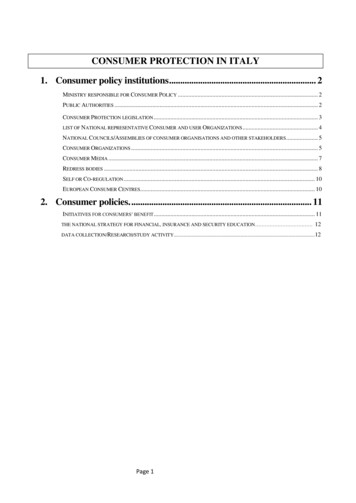
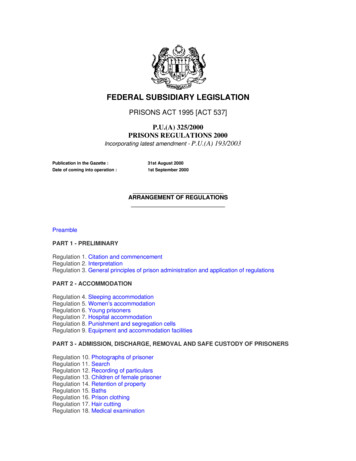
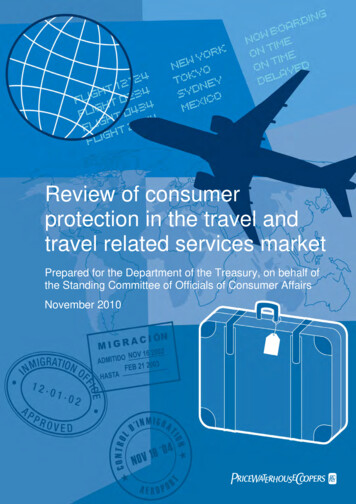



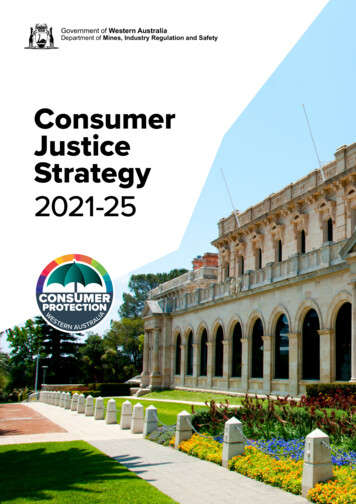
![Chapter 11. Consumer Protection. [Note] - Montgomery County, Maryland](/img/40/chap11.jpg)


